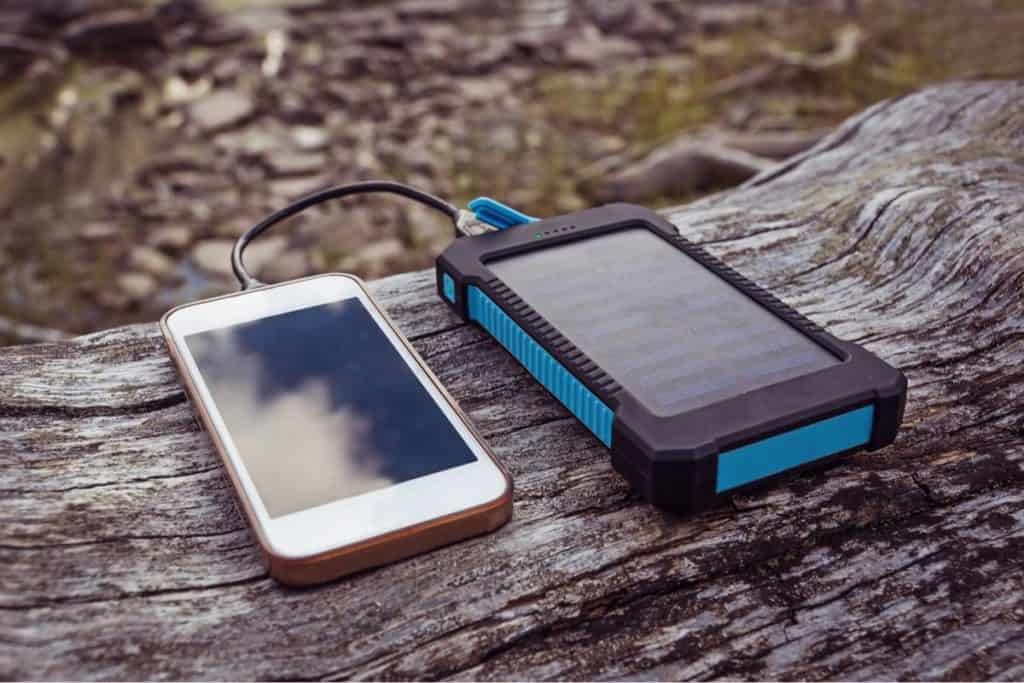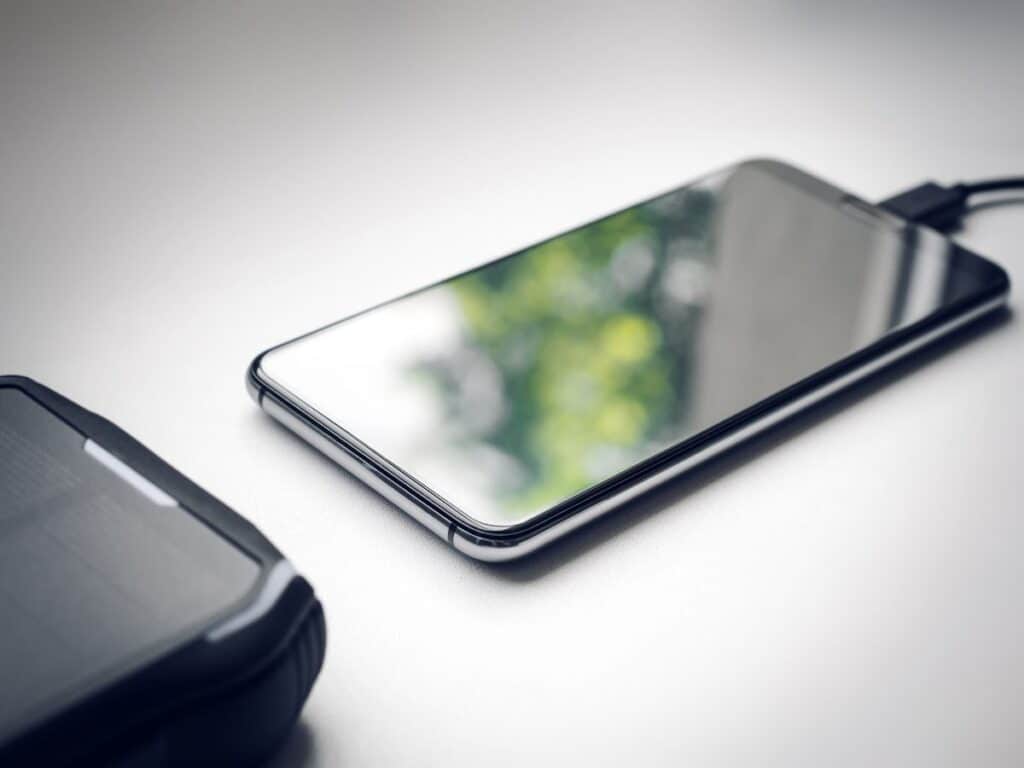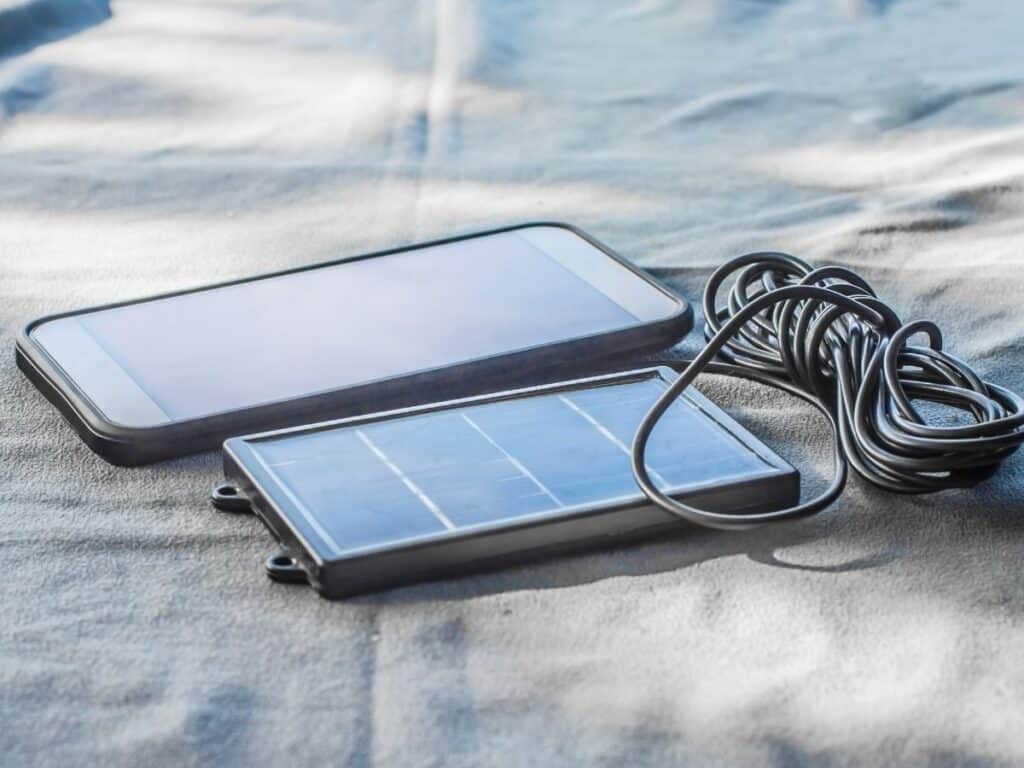We’ve all had it happen to us. We’re out on the road and not only is our cell phone about to die but our backup battery pack is about to die too.
But what other solutions are there and that got me testing and researching if solar phone charges work?
Yes, solar phone chargers do work and can effectively charge phones and other electronic devices. Solar phone chargers use solar panels to convert sunlight into electricity, which is then used to charge the phone’s battery. They are particularly useful in outdoor settings, during camping trips, hiking, or other situations where access to electrical outlets may be limited.

How well these solar phone charger work however do depend on several factors:
- Sunlight Availability
Solar phone chargers require sunlight to generate electricity. Direct sunlight provides the most efficient charging conditions, while indirect sunlight or cloudy conditions may result in slower charging rates.
- Solar Panel Quality
The quality and efficiency of the solar panels used in the charger play a significant role in determining the charging performance. Higher-quality solar panels can capture more sunlight and convert it into electricity more effectively, resulting in faster charging times.
- Battery Capacity
The capacity of the built-in battery in the solar charger itself also affects its charging capability. A larger battery capacity allows for more energy storage, which can be used to charge devices even when sunlight is not available.
- Device Compatibility
Solar phone chargers typically come with USB ports or other connectors to charge different devices. It’s important to ensure that the charger is compatible with your specific phone or electronic device to ensure proper charging.
While solar phone chargers can be a convenient and eco-friendly charging solution, it’s important to note that their charging rates may be slower compared to traditional electrical chargers.
That then obviously leads to how long solar chargers take to charge a phone…

How long does it take a solar charger to charge a phone?
On average, under ideal conditions with direct sunlight, a solar charger with a moderate capacity (around 10,000 mAh) and efficient solar panels can charge a smartphone with a typical battery capacity (around 3,000 to 4,000 mAh) in approximately 3 to 6 hours.
This estimate assumes the phone is not being used while charging and that there are no significant energy losses in the charging process.
The charging time of a phone using a solar charger will also depend on various factors, including the capacity of the solar charger, the intensity of sunlight, the efficiency of the solar panels, and the battery capacity of the phone being charged. As a result, it is challenging to provide an exact time frame for charging a phone using a solar charger.
Additionally, charging times may be longer under suboptimal sunlight conditions, such as cloudy or overcast weather, or if the charger has a lower capacity or less efficient solar panels.
To maximize the charging speed when using a solar charger, I do suggest that you place you palce the solar phone charger in direct sunlight, ensure that the solar panels are clean and unobstructed, and use a high-quality charging cable.
Some solar chargers have built-in batteries, allowing them to store energy and charge devices even when sunlight is not available.
Because there are so many factors that will impact how fast your solar charger charges your phone, it’s advisable to have realistic expectations and to plan accordingly, especially when using it in outdoor settings where direct sunlight may not always be guaranteed.
Now that you know how long it should take to charge your phone with a solar charger, how many solar cells will you need to get the job done?

How many solar cells are needed to charge a cell phone?
To estimate the number of solar cells needed to charge your cell phone, you would need to consider the following steps:
- Determine the power consumption of your phone.
Check the charger or the manufacturer’s specifications to find the power rating in watts (W) or the charging current in amps (A) required by your phone.
- Estimate the charging time.
Decide how quickly you want to charge your phone. The charging time can vary based on personal preference and available sunlight. Keep in mind that faster charging may require more solar power.
- Assess solar panel efficiency
Consider the efficiency rating of the solar panel you plan to use. Efficiency indicates the percentage of sunlight that the panel can convert into electricity. Higher efficiency panels can generate more power from the same amount of sunlight.
- Calculate the required solar power
Multiply the power consumption of your phone by the desired charging time. For example, if your phone requires 5W and you want to charge it for 4 hours, you would need a total of 20 watt-hours (Wh) of solar power.
- Adjust for panel efficiency
Divide the required solar power by the efficiency of the solar panel. This will give you an estimate of the total solar power needed from the panel. For example, if the solar panel has an efficiency of 15%, you would divide 20 Wh by 0.15, resulting in approximately 133.3 Wh.
- Consider solar cell capacity
Finally, consider the capacity of individual solar cells. Based on the total solar power calculated in the previous step, divide it by the wattage rating of each solar cell to determine the number of solar cells needed.
This calculation will provide a rough estimate of the number of solar cells you’ll need, and actual conditions and performance may vary.
It may therefore be more practical to use a solar charger with a built-in battery, as it can store energy and charge your phone even when sunlight is not available.

Now that you know how many solar cells you may need, do you need to leave the cells in direct sunlight?
Do solar phone chargers need direct sunlight?
Solar phone chargers are designed to harness energy from sunlight, but they do not necessarily require direct sunlight to function. While direct sunlight provides the most efficient and optimal charging conditions, solar phone chargers can still generate power from indirect sunlight or even on cloudy days.
Charging speed and efficiency may be reduced compared to when the charger is exposed to direct sunlight.
Solar panels in phone chargers are designed to capture solar radiation and convert it into electricity.
They can still generate power when exposed to diffuse sunlight, which is sunlight that passes through clouds or indirect sunlight reflected off surfaces. The charging rate will typically be slower under such conditions.
It’s important to note that the charging performance of solar phone chargers can vary depending on the quality and specifications of the charger. Higher-quality chargers with more efficient solar panels will perform better under low light conditions compared to cheaper or less efficient models.
If you are using a solar phone charger in suboptimal sunlight conditions, it may take longer to charge your phone or maintain its charge.
We all know cell phone batteries aren’t the best. That begs the next question, let’s find out if charging your cell phone battery with solar will damage your battery…
Does solar charging affect phone batteries?
Solar charging can affect a phone battery, but the impact depends on several factors, including the quality of the solar charger and how it is used.
Here are a few key points to consider:
- Charging Efficiency
Solar chargers vary in their efficiency and output power. Some solar chargers may provide a slower charging rate compared to traditional electrical chargers. Slower charging can have a positive impact on battery health, as it generates less heat and puts less stress on the battery. However, extremely slow or inconsistent charging may not be ideal for the overall performance of the phone.
- Overcharging and Overheating
It is important to use a solar charger that has built-in overcharge protection or a charge controller. Overcharging a phone battery can degrade its overall capacity and shorten its lifespan. Additionally, excessive heat generated during charging can also negatively impact battery health. Good-quality solar chargers should have mechanisms in place to prevent overcharging and excessive heat buildup.
- Environmental Factors
Solar chargers rely on sunlight to generate power. Factors such as weather conditions, time of day, and shading can affect the charging efficiency. Inconsistent or insufficient charging may result in repeated charging and discharging cycles, which can contribute to wear and tear on the battery over time.
- Battery Temperature
High temperatures, whether from direct sunlight or poor ventilation, can adversely affect the performance and lifespan of a phone battery. If you are using a solar charger outdoors, it’s important to keep the phone and battery within a reasonable temperature range to avoid potential damage.
While solar charging can have some impact on your phone’s battery, using a high-quality solar charger, ensuring proper charging and temperature management, and avoiding overcharging can help minimize any negative effects.
